
Alan Garner is an English novelist best known for his children's fantasy novels and his retellings of traditional British folk tales. Much of his work is rooted in the landscape, history and folklore of his native county of Cheshire, North West England, being set in the region and making use of the native Cheshire dialect.
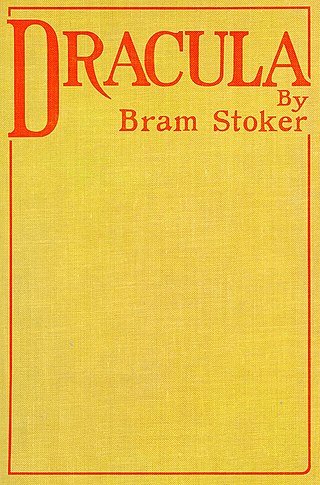
Dracula is a novel by Bram Stoker, published in 1897. An epistolary novel, the narrative is related through letters, diary entries, and newspaper articles. It has no single protagonist and opens with solicitor Jonathan Harker taking a business trip to stay at the castle of a Transylvanian nobleman, Count Dracula. Harker escapes the castle after discovering that Dracula is a vampire, and the Count moves to England and plagues the seaside town of Whitby. A small group, led by Abraham Van Helsing, investigate, hunt and kill Dracula.
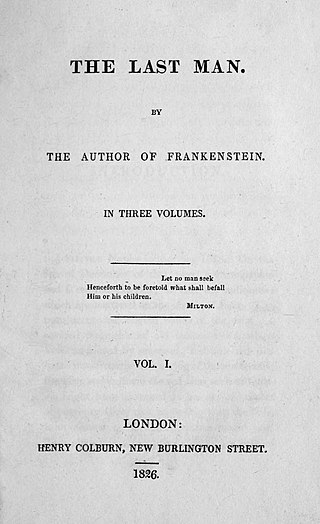
The Last Man is an apocalyptic, dystopian science fiction novel by Mary Shelley, first published in 1826. The narrative concerns Europe in the late 21st century, ravaged by the rise of a bubonic plague pandemic that rapidly sweeps across the entire globe, ultimately resulting in the near-extinction of humanity. It also includes discussion of the British state as a republic, for which Shelley sat in meetings of the House of Commons to gain insight to the governmental system of the Romantic era. The novel includes many fictive allusions to her husband Percy Bysshe Shelley, who drowned in a shipwreck four years before the book's publication, as well as their close friend Lord Byron, who had died two years previously.
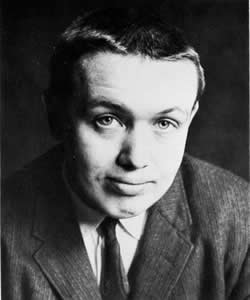
John Anthony Bellairs was an American author best known for his fantasy novel The Face in the Frost and many Gothic mystery novels for children featuring the characters Lewis Barnavelt, Rose Rita Pottinger, Johnny Dixon, and Anthony Monday. Most of his books were illustrated by Edward Gorey. Thirteen unfinished and original sequels to Bellairs' books have been written by Brad Strickland. At the time of his death, Bellairs' books had sold a quarter-million copies in hard cover and more than a million and a half copies in paperback.

Willa Sibert Cather was an American writer known for her novels of life on the Great Plains, including O Pioneers!, The Song of the Lark, and My Ántonia. In 1923, she was awarded the Pulitzer Prize for One of Ours, a novel set during World War I.

Sam Youd was a British writer best known for science fiction written under the name of John Christopher, including the novels The Death of Grass, The Possessors, and the young-adult novel series The Tripods. He won the Guardian Children's Fiction Prize in 1971 and the Deutscher Jugendliteraturpreis in 1976.
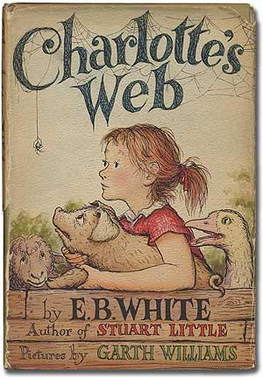
Charlotte's Web is a book of children's literature by American author E. B. White and illustrated by Garth Williams; it was published on October 15, 1952, by Harper & Brothers. The novel tells the story of a livestock pig named Wilbur and his friendship with a barn spider named Charlotte. When Wilbur is in danger of being slaughtered by the farmer, Charlotte writes messages in her web praising Wilbur, such as "Some Pig" and "Humble", to persuade the farmer to let him live.
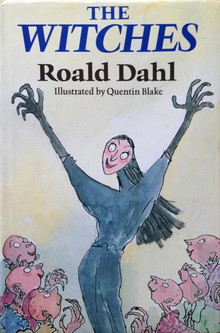
The Witches is a 1983 children's novel by British author Roald Dahl. A dark fantasy, the story is set partly in Norway and partly in England, and features the experiences of a young English boy and his Norwegian grandmother in a world where child-hating societies of witches secretly exist in every country. The witches are ruled by the vicious and powerful Grand High Witch, who arrives in England to organise her plan to turn all of the children there into mice.
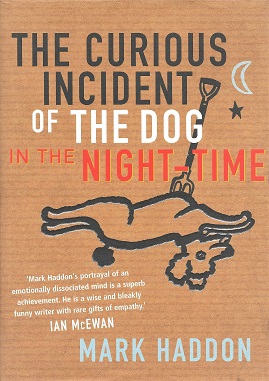
The Curious Incident of the Dog in the Night-Time is a 2003 mystery novel by British writer Mark Haddon. Its title refers to an observation by the fictional detective Sherlock Holmes in the 1892 short story "The Adventure of Silver Blaze". Haddon and The Curious Incident won the Whitbread Book Awards for Best Novel and Book of the Year, the Commonwealth Writers' Prize for Best First Book, and the Guardian Children's Fiction Prize. Unusually, it was published simultaneously in separate editions for adults and children.
Young adult literature (YA) is literature, most often including novels, written for readers from 12 to 18 years of age. The term YA was first used regularly in the 1960s in the United States. The YA category includes most of the genres found in adult fiction, with themes that include friendship, sexuality, drugs and alcohol, and sexual and gender identity. Stories that focus on the challenges of youth may be categorized as problem novels or coming-of-age novels. The boundary between children's and adult literature is flexible, subject to moral and political ideology, and in some cases meaningless.

Roll of Thunder, Hear My Cry is a 1977 Newbery Medal awarded novel by Mildred D. Taylor. It is a part of her Logan family series, a sequel to her 1975 novella Song of the Trees.

Paul Niggli was a Swiss crystallographer, mineralogist, and petrologist who was a leader in the field of X-ray crystallography.

The Coral Island: A Tale of the Pacific Ocean (1857) is a novel written by Scottish author R. M. Ballantyne. One of the first works of juvenile fiction to feature exclusively juvenile heroes, the story relates the adventures of three boys marooned on a South Pacific island, the only survivors of a shipwreck.
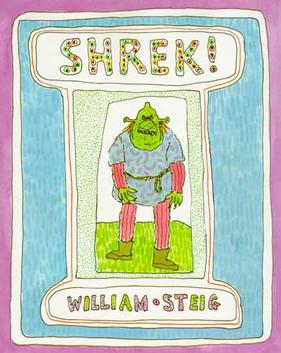
Shrek! is a fantasy comedy picture book published in 1990 by American book writer and cartoonist William Steig, about a repugnant green monster who leaves home to see the world and ends up marrying an ugly princess. The book was generally well received upon publication, with critics praising the illustrations, originality, and writing. Critics have also described Shrek as an antihero and noted the book's themes of satisfaction and self-esteem. The book served as the basis for the first Shrek film

Taronga (1986) is a young adult science fiction post-apocalyptic novel written by Australian author Victor Kelleher. The story revolves around the catastrophic disaster that destroys the Earth as we know it and its impact on Australia in the Southern Hemisphere. It is not directly revealed to the audience what has caused this apocalypse, but it is assumed that it was due to global war. The protagonist is a young teenager named Ben, who has developed telepathic powers and is able to communicate with animals.

The Watsons Go to Birmingham – 1963 is a historical-fiction novel by Christopher Paul Curtis. First published in 1995 by Delacorte Press, it was reprinted in 1997. It tells the story of the Watsons, a lower middle class African-American family living in Flint, Michigan in the early 1960s from the perspective of Kenny Watson, the middle child of three. The first part of the novel focuses on Kenny's struggles to make friends as a smart and thoughtful ten-year-old, then shifts in setting when his parents decide to deliver their oldest son, Byron, to live with his grandmother in Birmingham, Alabama. The family embarks on a road trip to the Deep South, and while visiting Alabama, they get caught up in a tragic historical event of the Civil Rights Movement.

The Turbulent Term of Tyke Tiler is a children's school adventure novel by Gene Kemp, first published by Faber and Faber in 1977 with illustrations by Carolyn Dinan. It is set at Cricklepit Combined School, a fictional primary school based on St Sidwell's School in Exeter where Kemp worked as a teacher from 1963 to 1979. The book inaugurated a series of further stories by Kemp set at the same school. Tyke Tiler follows the final term of Tyke, an adventurous twelve-year-old, at Cricklepit Combined School. After Tyke's best friend Danny gets into various scrapes, Tyke has to protect and stick up for him despite Danny being misunderstood by teachers and other students.

The Daydreamer is a 1994 children's novel by British author Ian McEwan. Illustrated by Anthony Browne. The novel was first published by Jonathan Cape. It draws its plot directly from the Rankin/Bass movie, The Daydreamer (1966) in which a young boy daydreams and enters a world of Hans Christian Andersen stories. It is considered to be McEwan's first book for children, or second if taking into account the picture book Rose Blanche (1985). Critics praised McEwan's imagination, but noted that the book had high "sweetness-and-light levels".

The Shoe Bird is a 1964 children's novel by Southern writer Eudora Welty. The novel tells the story of a parrot in a shoe store, as he talks to other birds about shoes. Welty, who had never written any children's literature before, wrote it to satisfy a contractual obligation with her publisher Harcourt Brace and to pay for a new roof on her house.
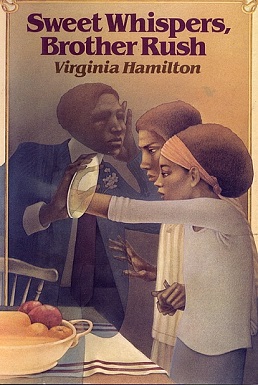
Sweet Whispers, Brother Rush is a 1982 children's novel by Virginia Hamilton. The novel deals with the paranormal, poverty, single motherhood, childhood illness, and child abuse. The novel, like many of Hamilton's works, is set in Ohio.



















